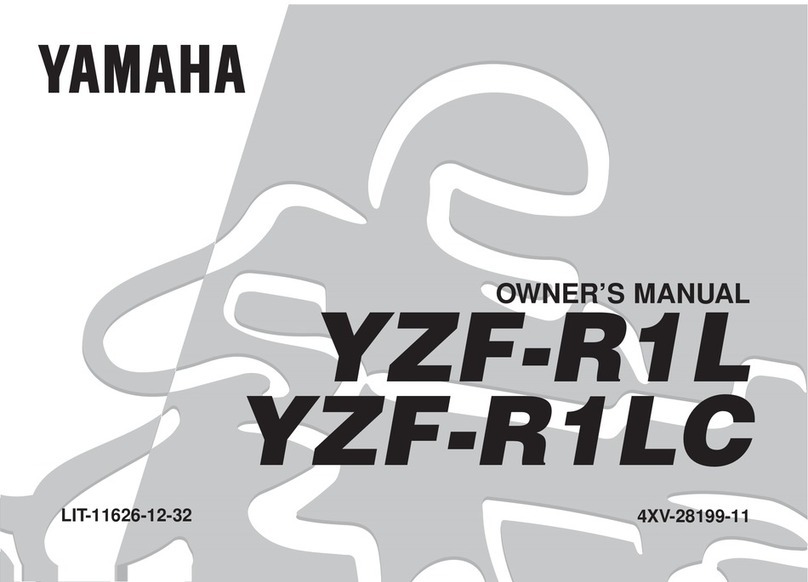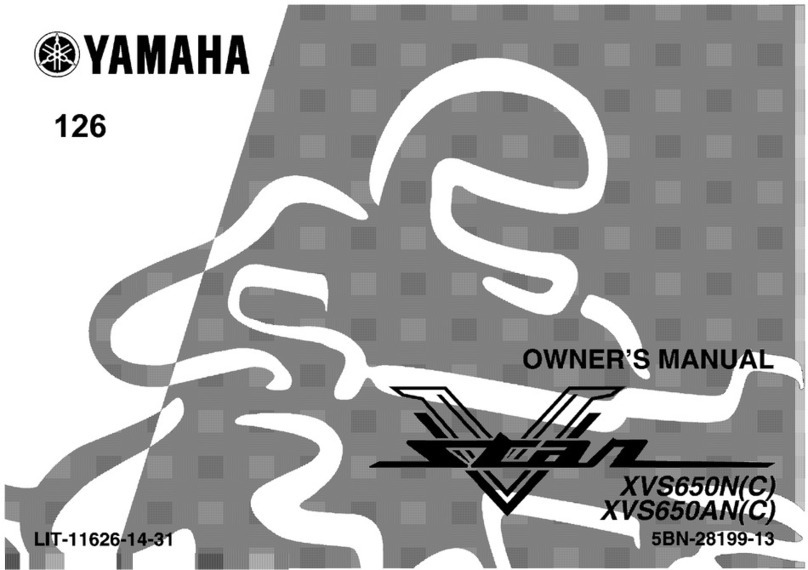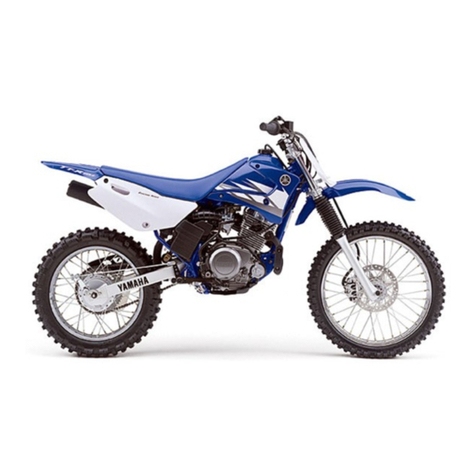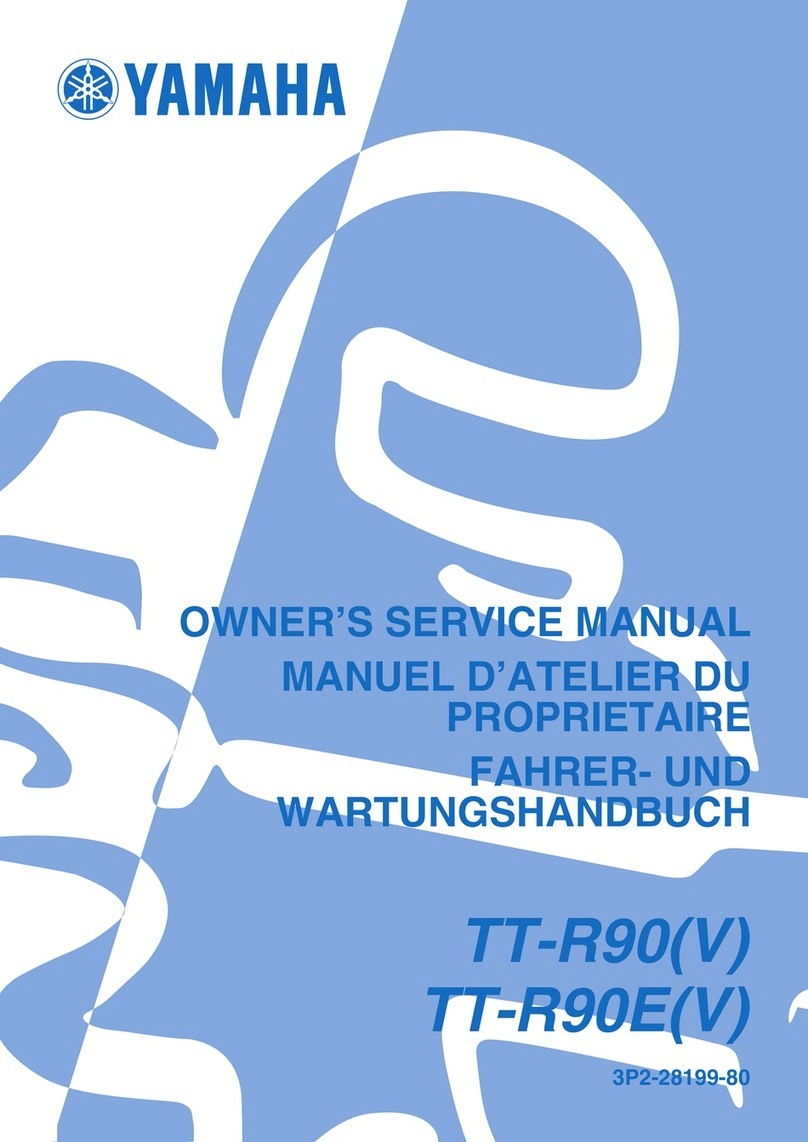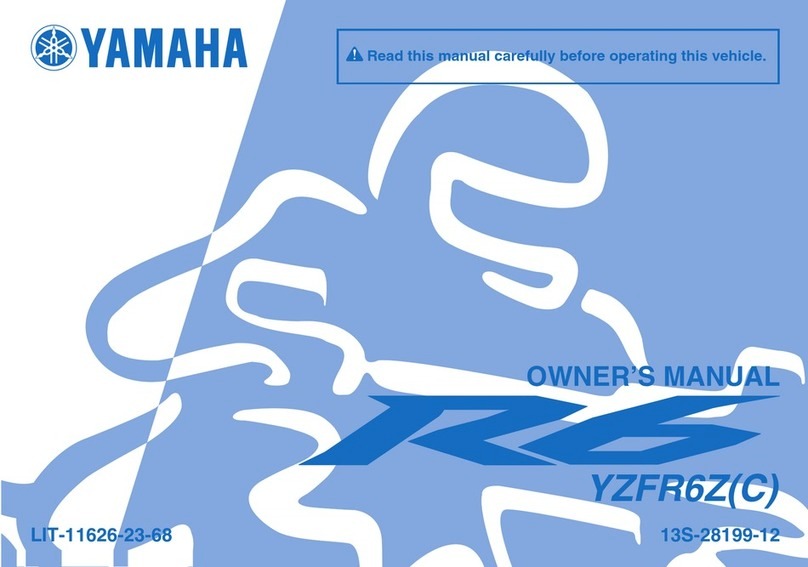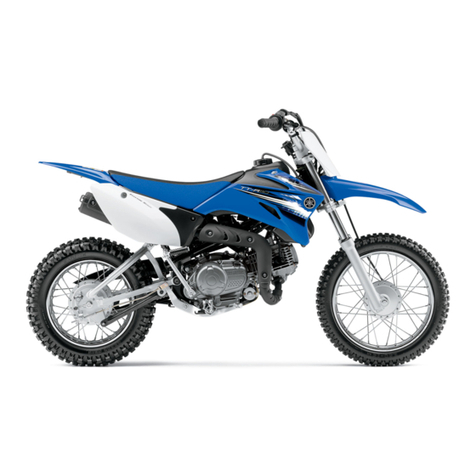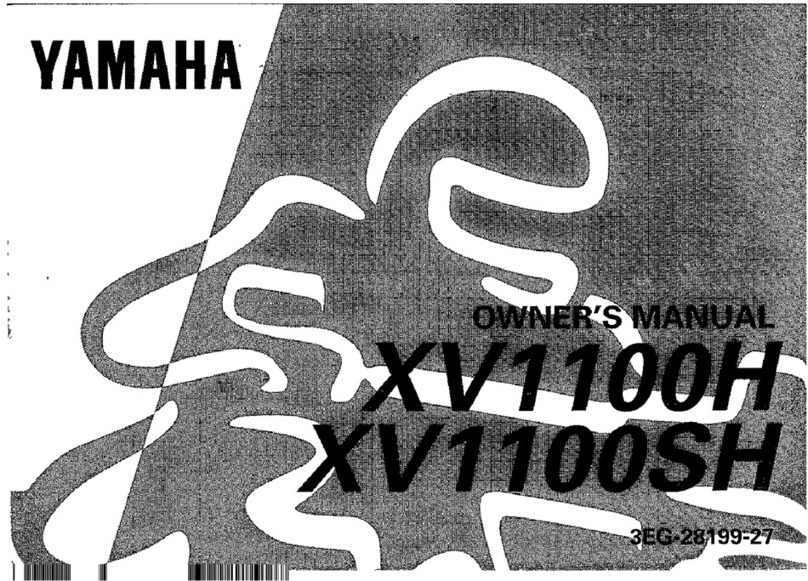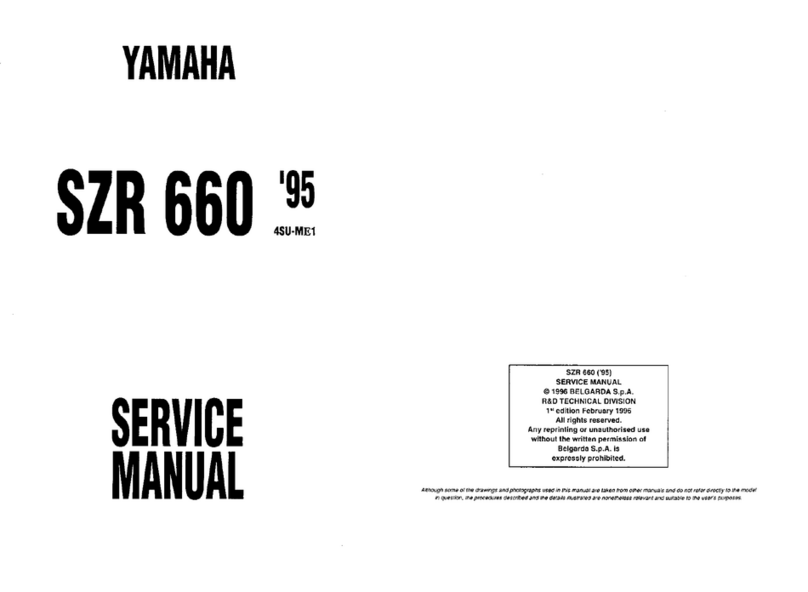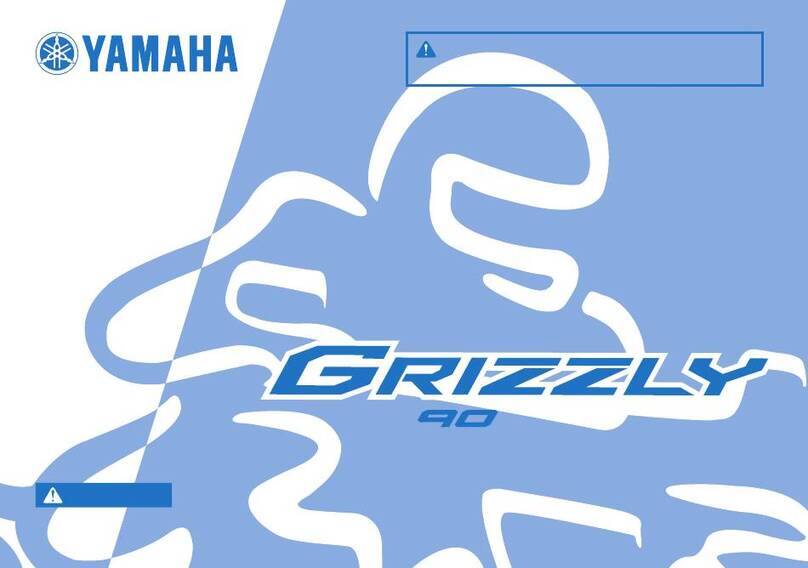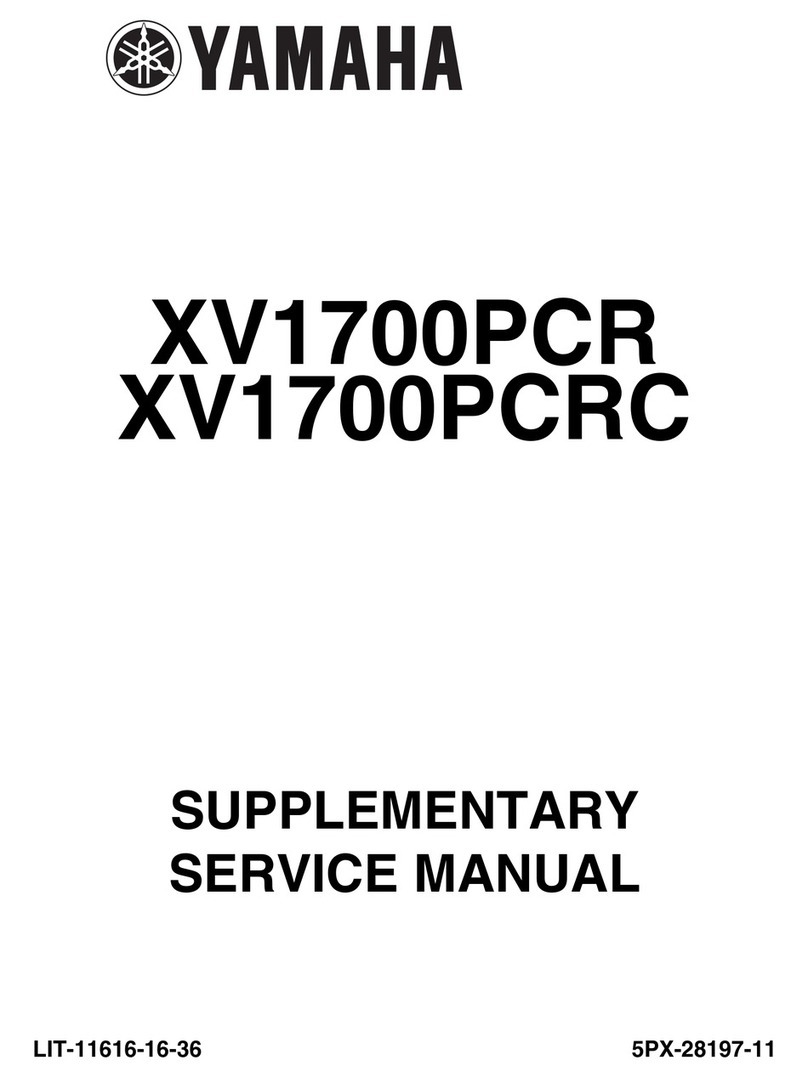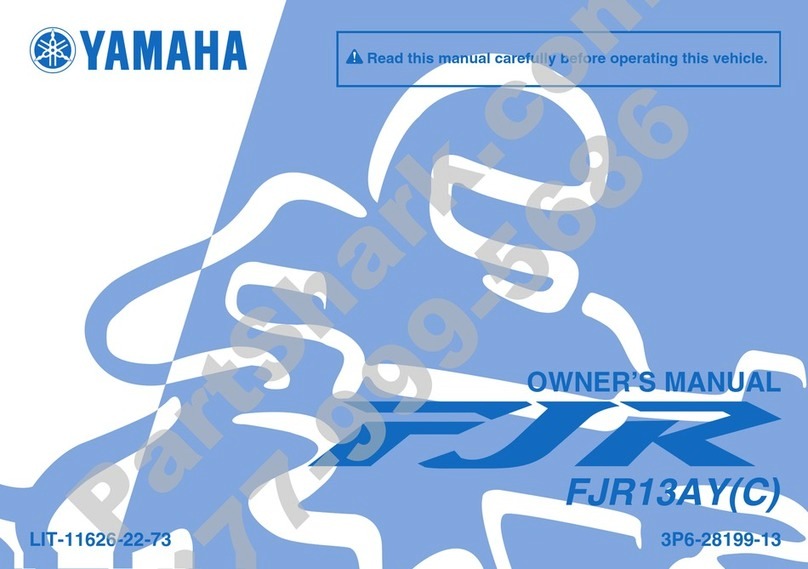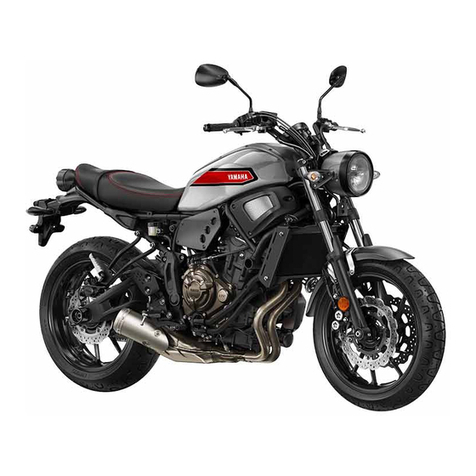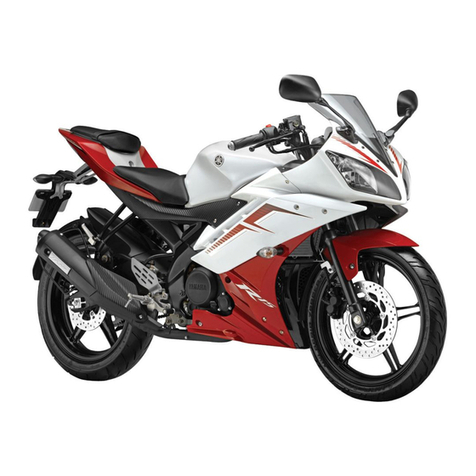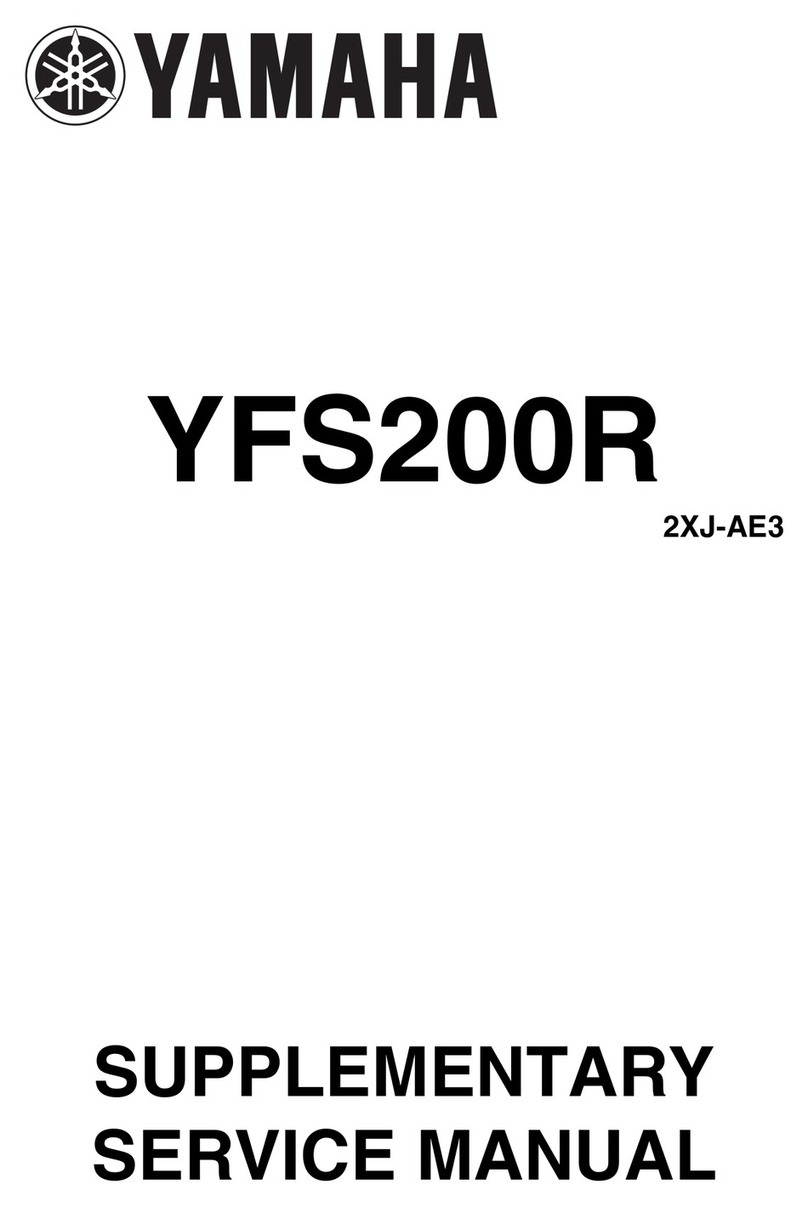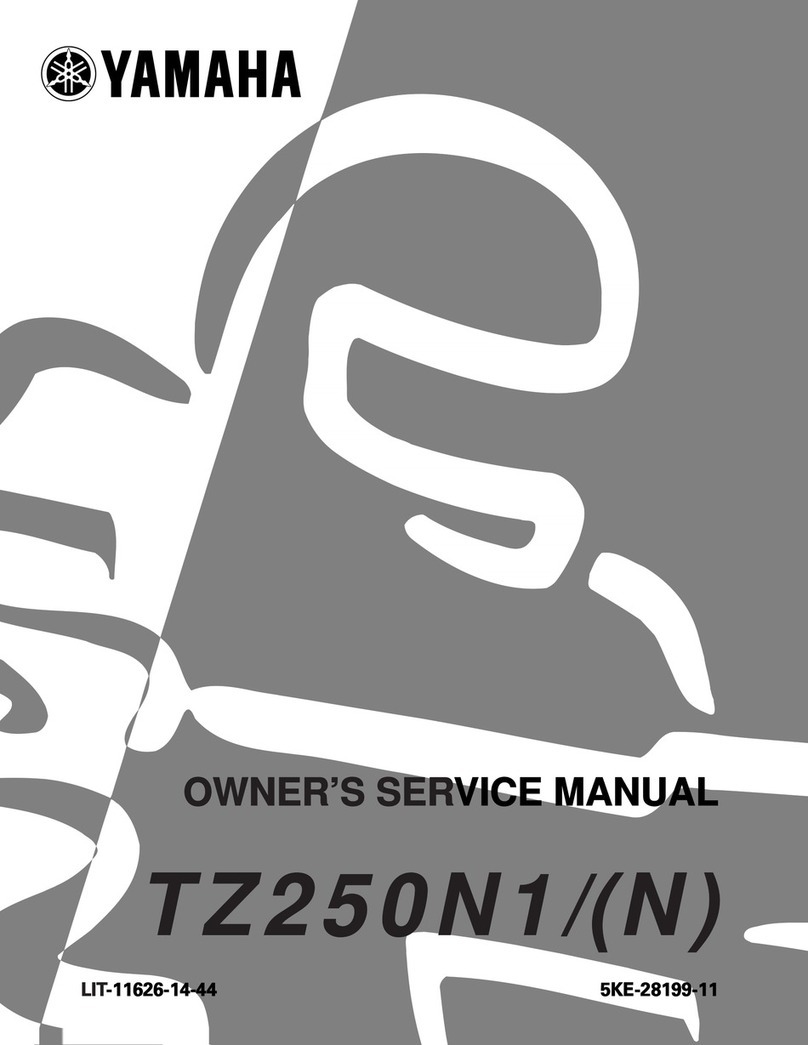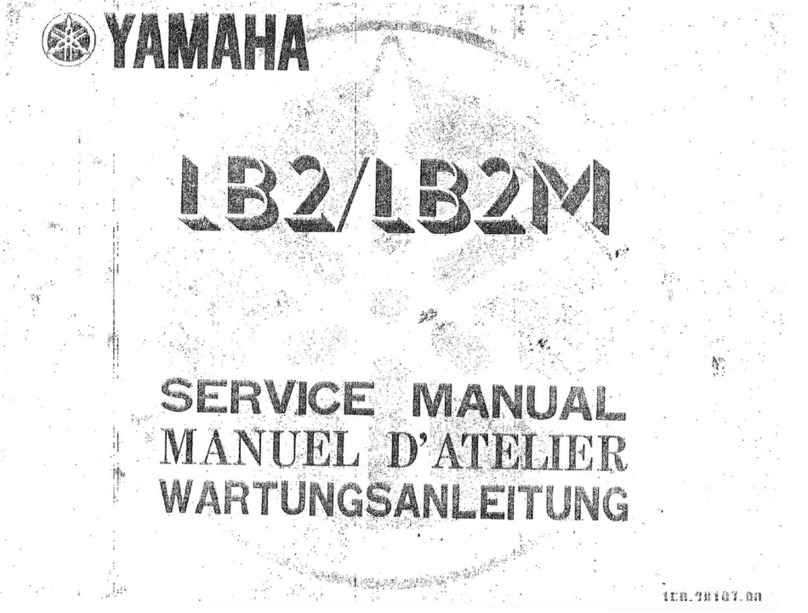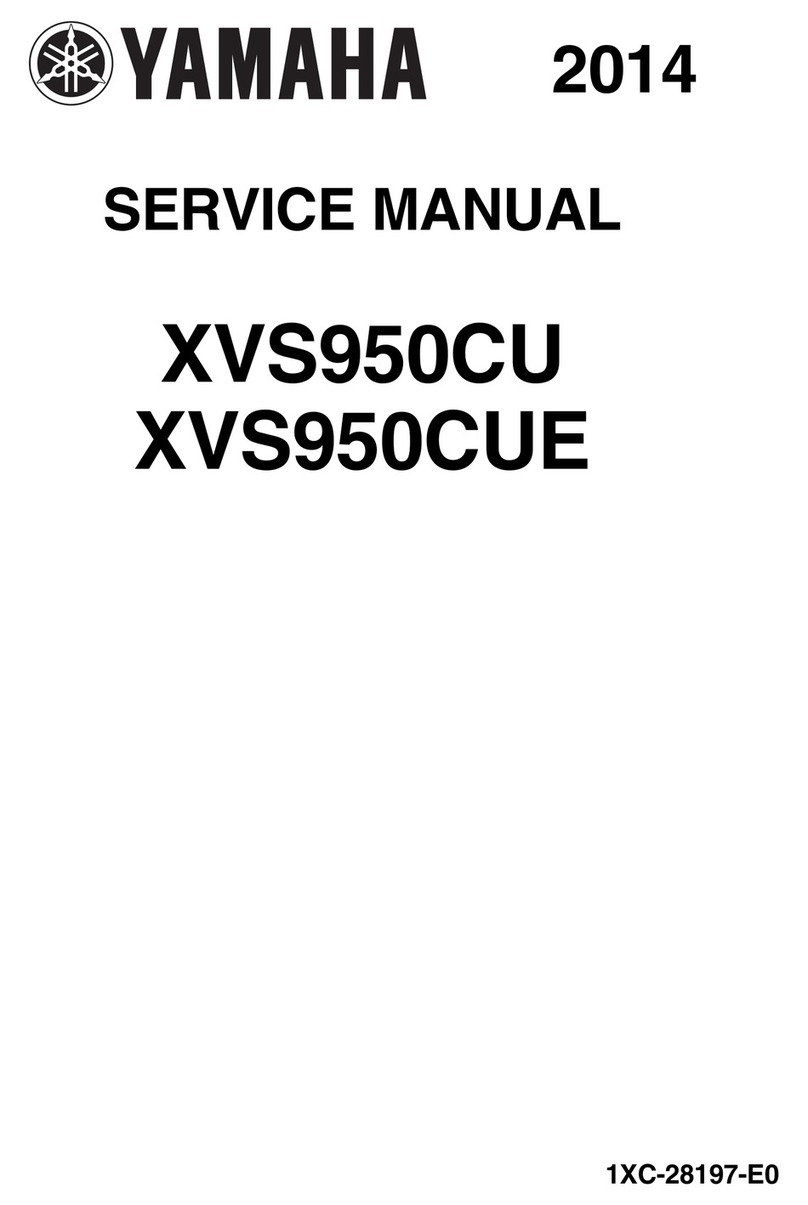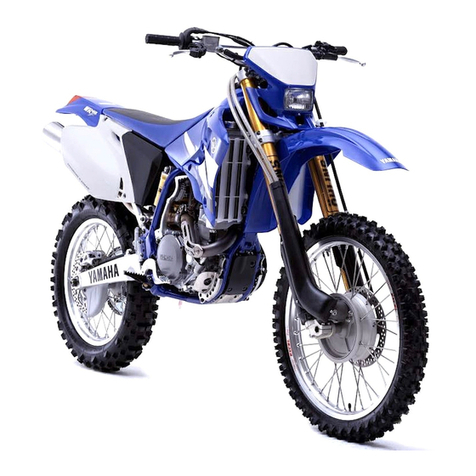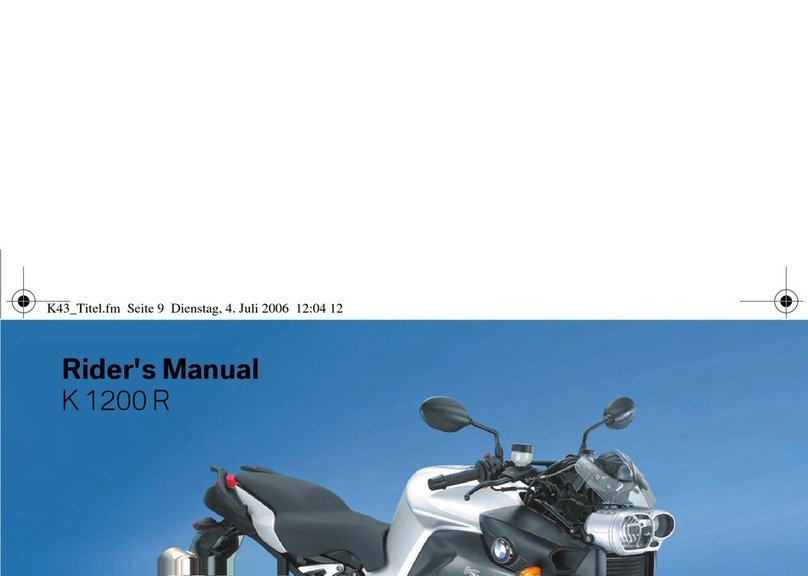
TABLE OF CONTENTS
Safety Information
.............................
1-1
Description .........................................2-1
Left view ...........................................2-1
Right view
........................................
2-2
Controls and instruments ................2-3
Instrument And Control Functions
.
3-1
Main switch/steering lock
................
3-1
Indicator lights
..................................
3-2
Speedometer unit ............................3-2
Fuel gauge ..........................
.............
3-3
Handlebar switches .........................3-3
Shift pedal ........................................3-4
Brake lever .........................
..............
3-4
Brake pedal .........................
.............
3-4
Fuel tank cap ..................
.................
3-5
Fuel ............................
......................
3-5
Starter (choke) lever ................
........
3-6
Catalytic converter .............
..............
3-6
Upload shelves .................
...............
3-6
Sidestand .............................
............
3-7
Kickstarter ..........................
..............
3-7
Seat ...................................
...............
3-7
Helmet holders ...............
..................
3-7
Pre-Operation Checks ........
..............
4-1
Pre-operation check list .....
..............
4-2
Operation And Important Riding
Points ..............................................
....
5-1
Starting the engine .....
.....................
5-1
Shifting ..............................
...............
5-2
Starting and acceleration ........
........
5-2
Deceleration and braking ................5-2
Tips for reducing fuel
consumption .........
...........................
5-3
Checking and lubricating the brake
pedal .............................
..................
6-18
Checking and lubricating the brake
lever .....................
...........................
6-18
Checking and lubricating the
centerstand and sidestand ......
......
6-18
Lubricating the swingarm pivots
...
6-19
Checking the front fork ..........
........
6-19
Checking the steering ...........
.........
6-20
Checking the wheel bearings .
.......
6-20
Battery ............................................6-20
Replacing the fuse ...............
..........
6-22
Replacing the headlight bulb or
front position light bulb ......
............
6-22
Replacing a front turn signal light
bulb ..................................
...............
6-23
Replacing a rear turn signal light/
tail light/brake light bulb .............
....
6-24
Front wheel ......................
..............
6-24
Rear wheel ....................
.................
6-25
Troubleshooting .............................6-27
Troubleshooting charts ........
..........
6-28
Motorcycle Care And Storage ..
.......
7-1
Matte colour warning .........
..............
7-1
Care .......................................
...........
7-1
Storage
........................
....................
7-3
Specifications ..........
...........................
8-1
Consumer Information ....
..................
9-1
Product label ....................................9-1
Vehicle identification number ..
.........
9-1
Identification numbers .
.....................
9-1
Engine serial number .
......................
9-1
Engine break-in .............
...............
5-3
Parking ..............................
............
5-4
Engine emissions .........................5-4
Periodic Maintenance And Minor
Repair .................................
..............
6-1
Owner’s tool kit .............................6-1
Periodic maintenance and care
chart ..........................................
....
6-2
Removing and installing the
cowlings and panel .........
..............
6-5
Checking the spark plug ......
........
6-6
Engine oil ...........................
...........
6-7
Cleaning the air filter element .
.....
6-9
Adjust carburetor ..............
..........
6-10
Adjusting the engine idling
speed ................................
..........
6-10
Checking the throttle cable free
play ..........................
....................
6-11
Valve clearance ..........
................
6-11
Tires ...............................
.............
6-11
Wheel .........................
.................
6-13
Checking the brake lever free
play ............................
..................
6-13
Adjusting the brake pedal free
play ....................
..........................
6-14
Adjusting the rear brake light
switch ..........................................6-14
Check the front and rear
brake shoes ................................6-15
Drive chain slack ........
................
6-15
Cleaning and lubricating the drive
chain .................
..........................
6-17
Checking and lubricating the control
cable .............
..............................
6-17
Checking and lubricating the throttle
grip and cable .............................6-17
